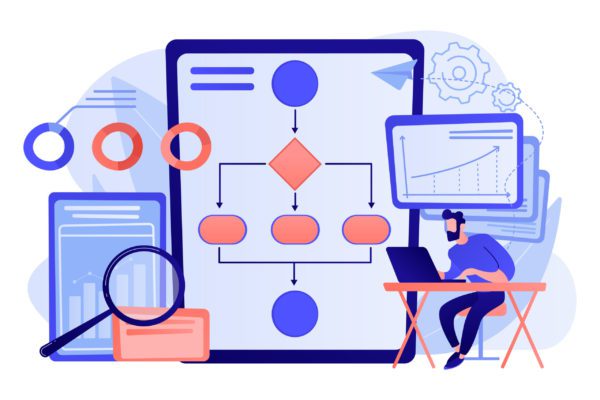Organizations are making significant investments in risk management solutions to capture, analyze, and monitor risk as the focus on risk awareness grows. In LogicGate’s second annual Risk Management Survey, 190 senior executives shared details of their company’s risk management programs and capabilities. When asked about the programs and tools they rely on most, 43% of survey respondents cited the use of spreadsheets and emails to manage their risk programs with fewer using cloud software solutions and even less using on-premise software.
While these manual processes aren’t the most efficient, this is not completely unexpected.
Spreadsheets and emails are typically the first tools organizations use to build out their risk management processes. And, as businesses grow, they may continue to rely on them despite the increasingly complex nature of the risks they face.
Some organizations revert to spreadsheets and emails after an unsatisfactory experience with a legacy platform that failed to adapt to their needs or became too expensive to manage. Other organizations adopt a siloed approach to risk management, using different platforms and point solutions to manage different types of risk. As an example, they may be using cloud-based software for compliance oversight but continue to manage their third-party relationships and risk via spreadsheets and emails. This complicates their ability to comprehensively capture, view, and manage their risk exposure.
Creating Operationally Resilient Processes
Taking a piecemeal approach to risk management makes it harder for your organization to adapt to changes in the marketplace. The difference between a “good” risk program and a “great” risk program is its ability to support operational resilience and build competitive advantage.
A centralized, dynamic GRC solution that enhances communication and efficiency is a necessary foundation to help organizations feel confident in their ability to make well-informed business decisions and adapt as circumstances change.
Evaluating Your Options
Flexible GRC solutions provide a system of checks and balances that supports your organization’s strategic goals and operations. As risk is inherent in almost every aspect of business, and responsibility for risk management is often distributed across multiple stakeholders, it can be hard to know where to start when evaluating a new platform.
Before reviewing your options, it’s important to take a holistic look at what requirements your company has today, with an eye on how that may evolve.
Perform a comprehensive assessment of your risk management needs and responsibilities across the organization. This should be a cross-divisional exercise, taking into account not only who owns the risk but who contributes to its identification, monitoring, and reporting. Consider strategic initiatives, such as a digital transformation program, that may require additional risk management capabilities in the future.
Evaluate the features and benefits offered by the software. How many of your current risk management processes can the platform replace? Can the program grow with your organization?
Consider existing workflows and how they may need to change. What level of training will be required? Can the software integrate with your existing platforms, such as Slack or Jira, making it easier to incorporate or will it require new ways of working and communicating?
Transitioning risk management from manual processes to a more flexible and collaborative approach shouldn’t be overwhelming nor should you have to start from scratch. A dynamic GRC platform can provide the flexibility your organization needs to be operationally resilient.
Discover what other risk professionals are focusing on to support operational resilience at their organizations and more key insights from LogicGate’s second annual Risk Management Survey by downloading the full report here.

